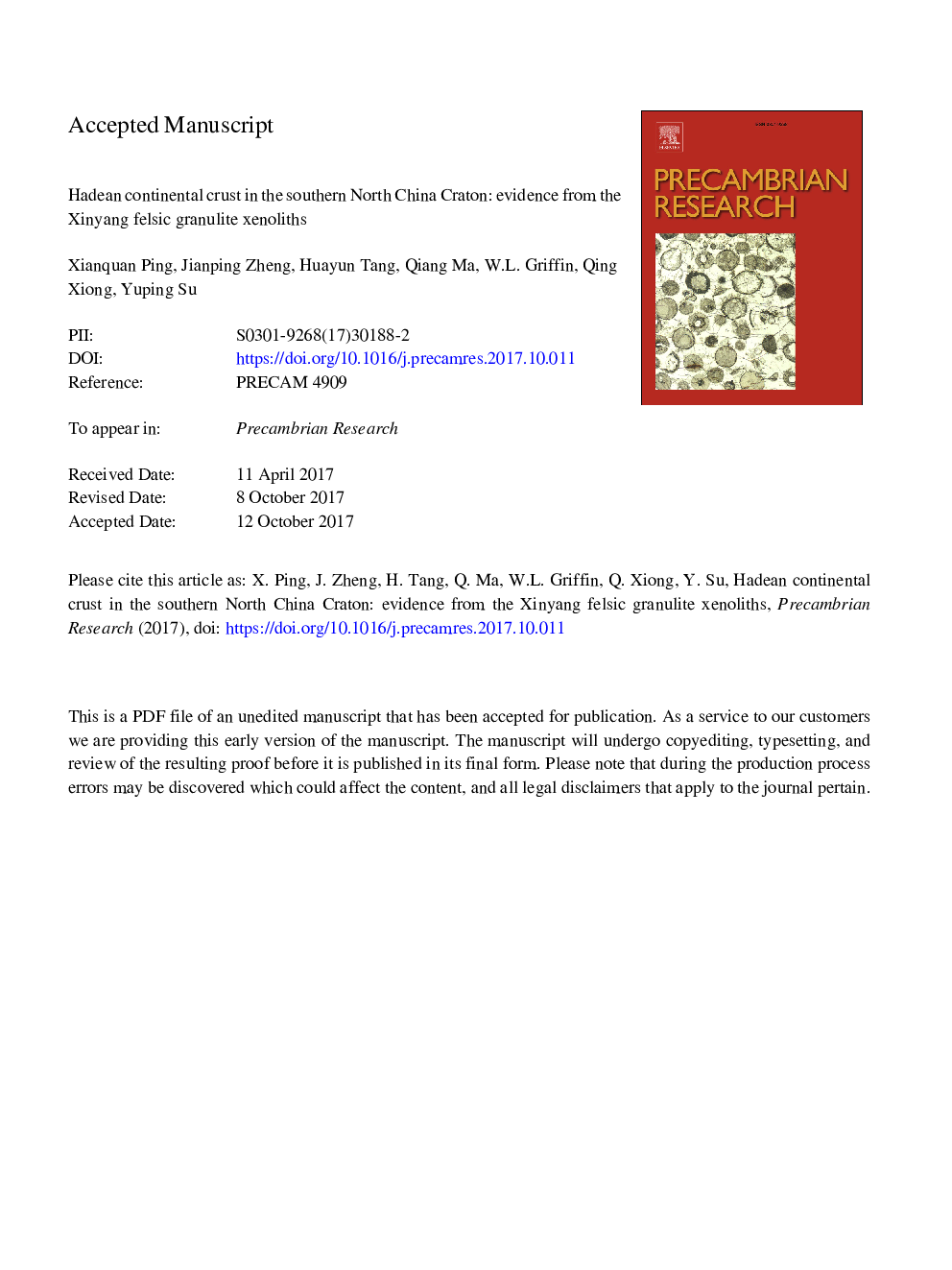| Article ID | Journal | Published Year | Pages | File Type |
|---|---|---|---|---|
| 8912632 | Precambrian Research | 2018 | 76 Pages |
Abstract
An increasing number of Hadean detrital and xenocrystic zircon crystals have been discovered in China, although its oldest crustal component remains enigmatic. Four xenoliths of garnet-free felsic granulites, entrained by the Mesozoic Xinyang volcanic rocks in the southern North China Craton (NCC), were selected for U-Pb dating and Lu-Hf isotopes of zircon, as well as whole-rock major- and trace element analysis. Their petrography and geochemical composition reveal that the xenoliths are of igneous origin. The magmatic zircons yield ages including 3.5-3.6â¯Ga and ca 2.1 Ga. The 3.5-3.6â¯Ga zircons have widely variable εHf(t) of â7.8 to +4.0 and model ages (Tcrust) of 3.51-4.12â¯Ga; the ca 2.1â¯Ga zircon grains have very negative εHf(t) (â29.0 to â26.2) and Hadean model ages (Tcrustâ¯=â¯3.96-4.10â¯Ga). The metamorphic zircons from the studied xenoliths record several thermal episodes at ca 2.73â¯Ga, 2.13-2.35â¯Ga and 1.77-1.86â¯Ga. These results suggest that Hadean crustal components may exist in the deep crust of the southern NCC, and probably suffered complex modification during Paleoarchean-Paleoproterozoic time. Combined with published data, the Hf crustal model ages of zircons from the NCC (peak at ca 3.94â¯Ga) are older than those from the South China Craton (peak at ca 3.77â¯Ga). This means that there is much more likelihood of finding more Hadean continental crust in the NCC than in the South China Craton. By comparison with the ancient crustal components in the Anshan and Caozhuang areas of the northern NCC, the Xinyang area in the southern NCC may be more prospective for further occurrences of Hadean zircons and/or rocks.
Keywords
Related Topics
Physical Sciences and Engineering
Earth and Planetary Sciences
Geochemistry and Petrology
Authors
Xianquan Ping, Jianping Zheng, Huayun Tang, Qiang Ma, W.L. Griffin, Qing Xiong, Yuping Su,
